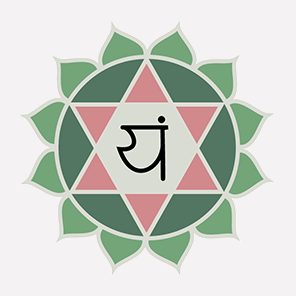Holistic Nature of the Ashram YTTC
In this series of blog articles, Mukti Mani explores key features of the Ashram's Yoga Teacher Training Course. In this 2nd of the series, she gives her personal experience of the wide breadth of teachings offered on the course.
In the second part of a series of blog posts Mukti Mani explores the holistic approach at the Ashram. Learning a broad base of yoga on the teacher training course (YTTC) was her main reason for choosing the course. The next YTTC is accepting applications now and starts in September 2019. For more information see here.
I am still relatively young (32) and love to practice asana (movement). But coming to Mandala Yoga Ashram has allowed me to broaden my understanding of yoga and incorporate other practices into my daily routine. Right now, there is an interesting debate raging about what is ‘authentic’ yoga and when something is a yoga-type exercise class (see my previous blog here). I don’t wish to discourage anyone from practicing anything they find helpful for their physical, mental and spiritual well being, but I would be inclined to say the most profound yoga for me has been about more than just moving my body.
When I did my initial teacher training course in India in my twenties, I remember being quite obsessed with achieving a “decent” headstand (whatever that means!). Thrilled as I was when this happened, it was a short-lived pleasure. Whilst my initial training had included lots of different forms of yoga, the group I was with was mostly young and healthy, which made it easy to get swept along in the idea of yoga being about a strong physical practice first and foremost.
When I started my teacher training here at this Ashram, I was the youngest person in the group, where many people had multiple health conditions that affected their practice. So, it was here that I started to reappraise what I was searching for. To my surprise I found the slow meditative movements of Pawamuktasana Series 1 could be just as powerful as things that looked outwardly impressive, like standing on my head.
Even more significant for me was the revelation of being introduced to other practices that are not offered so much in many public yoga classes, such as spending longer periods of time working with the breath, exploring the sticky philosophical questions like what does it really mean to live by the standard of truth (Satya) or non-violence (Ahimsa), being still and silent with the mind as a core daily practice, diving into the deeper parts of the psyche in yoga nidra. Perhaps most profoundly for me was starting a love affair with mantra and chanting practice.
To be taught all these different approaches, in a non-dogmatic and open space was refreshing. In the group there was some students that resonated with meditations like Antar Mouna the most and others that couldn’t get along with that practice but found a different way of being in themselves during Karma yoga (applying the principles of yoga into the everyday actions of gardening, cleaning and cooking).
The design of the course at the Ashram means that the last six months is spent developing individual research projects that are written up and presented at the end. This was a real highlight for most of us and demonstrated the value of having this holistic approach. Projects ranged from Trauma informed yoga, the intersection of yoga and Ayurveda, to yoga for diabetes, rewilding yoga and the chakras. I choose to do mine on Bhakti (devotional) yoga and had the opportunity to express my own journey from a reluctance to chant, to leading kirtan with over a hundred people.
Many years ago I lived in New Zealand and practiced with a lovely teacher there who told me her practice had radically changed when she got sick. She had been a young fit vinyasa teacher, who unexpectedly became bed bound as she was treated for cancer. At that point she became frustrated that she felt she could no longer practice something so important to her. Until she realised that of course she could still practice. With breath and mind, she found her way to a more profound and holistic practice. So even when she returned to teaching physical movement, those other doorways and techniques were more deeply imbedded. It was clear to me that her realisation was one of the things that made her such a good teacher. So too I would say the graduates of Mandala Yoga Ashram’s teacher training can give their students a broader picture of the diversity of yoga.
